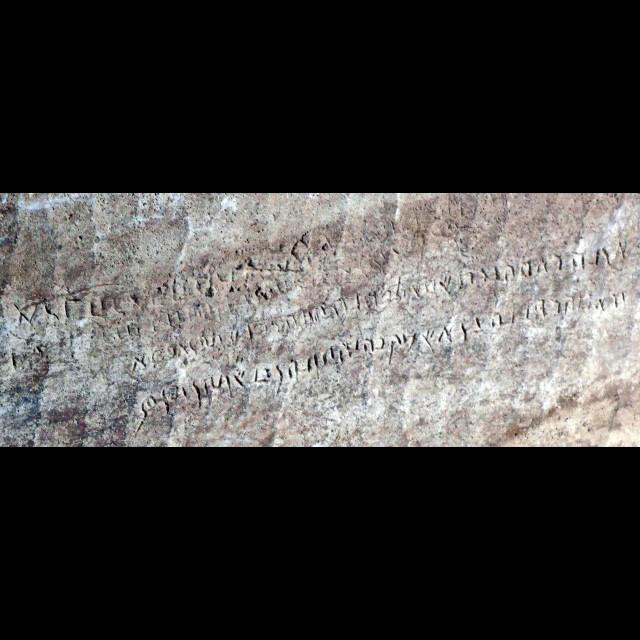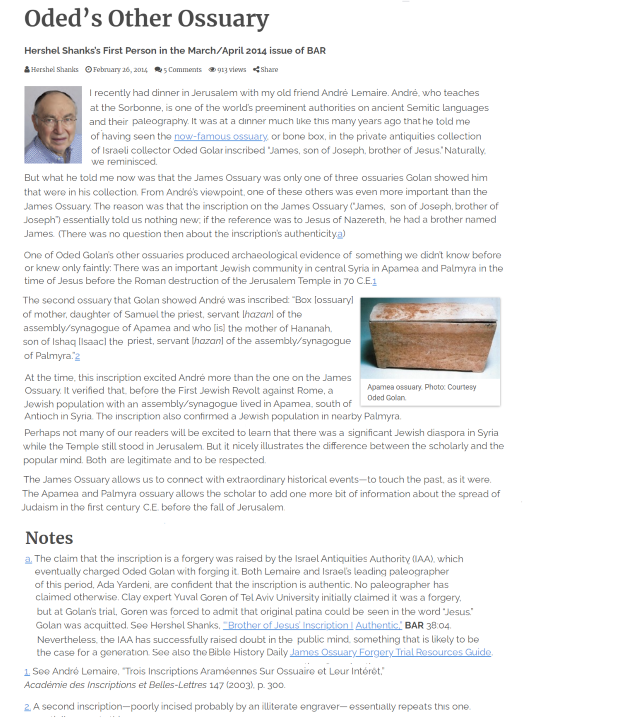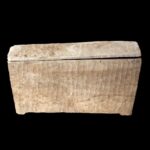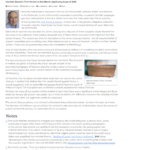An ossuary which bears a long inscription in Aramaic, dating to the first century AD, that was discovered in Jerusalem. The inscription was deciphered and published by Prof. Andre Lemaire (2003) and by Dr. Ada Yardeni from the Hebrew University.
The inscription is 2 lines long and is written in Aramaic:
"ארנה דאמה ברת שמאיל כהנה חזנה דכנשתה דאפמא"
"ודאמה דחננה בר אשחק כהנה חזנה דכנשתה דתדמר"
"Arona D'ama Barat Shamail Kahana, Hazana Dechneshta DeApamea"
"And D'ama D'Hanana Bar Ashak (Ishak) Kahana, Hazana Dechneshta DeTadmor"
And in Hebrew translation:
"The ossuary of IMA, the daughter of Shmuel HaCohen (the priest), the cantor of the synagogue of Apamea / and the mother of Hananya the son of Yitzchak Hacohen (the priest), the cantor of the synagogue of Tadmor (Palmyra)".
Since the word IMA can be interpreted both as a first name "IMA" (or Emma) (similar to the existence of the first name ABA = father), as well as in the meaning of "mother" (mother), linguistically there are 2 possibilities for understanding the inscription:
A. In the ossuary interred the bones of one woman named IMA (Emma). Her father was Shmuel HaCohen (the priest), from Apamea and she was the mother of Hanania HaCohen (the priest) from Palmyra, and the wife of Yitzhak HaCohen. (This is the interpretation of Prof. Lamier and Dr. Ada Yardeni.) In such a case, both Shmuel HaCohen and Yitzhak HaCohen (father and son) served in the same position, but in different Jewish communities in Syria.
B. The bones of two women were interred in the ossuary: one whose name was IMA (or Emma), the daughter of Shmuel HaCohen who was the cantor of the synagogue in Apamea (a city in northwestern Syria where there was a large Jewish community), and the other woman (whose name was not mentioned) was the mother of Hananiah the son of Yitzchak HaCohen (the priest), the cantor of the synagogue in Palmyra (Tadmor).
In any case, the finding of the ossuary in Jerusalem indicates that the bones (or bones) of the woman / women who were buried in the ossuary were brought to Jerusalem from far away. Such a phenomenon is known from a small number of other Palmyrian inscriptions found in Jerusalem, including that of Queen Sadan's sarcophagus and another one in a cave at Akeldama indicating that Ariston's bones from Apamea were interred in Jerusalem







